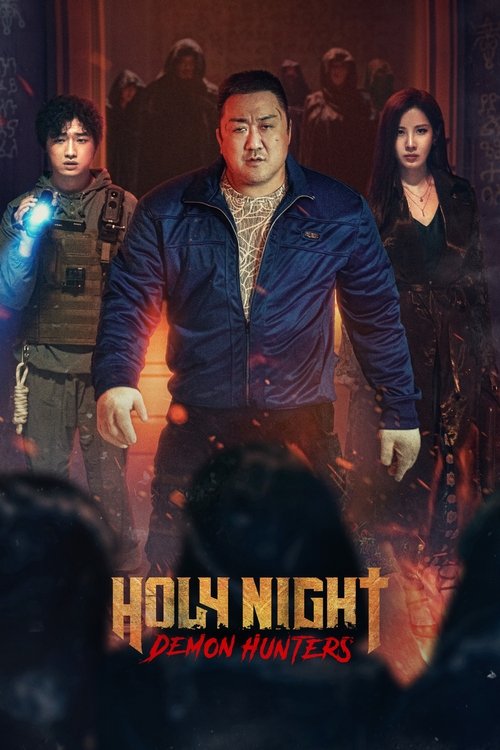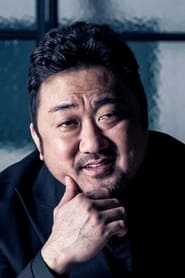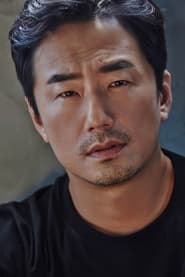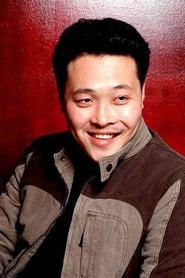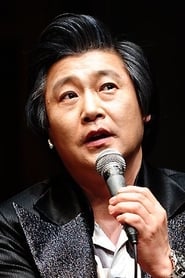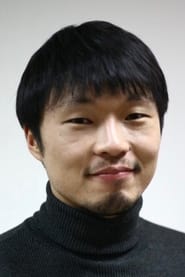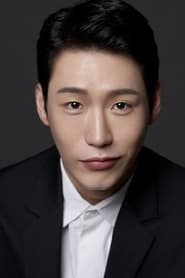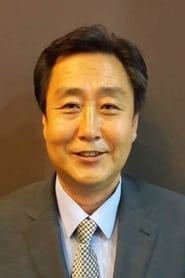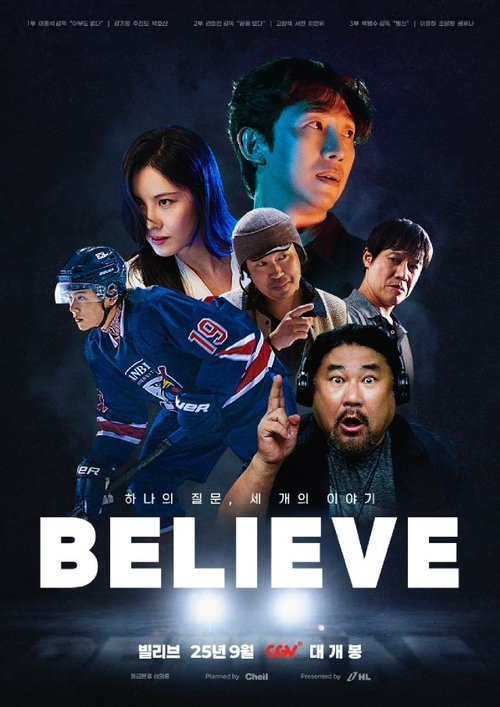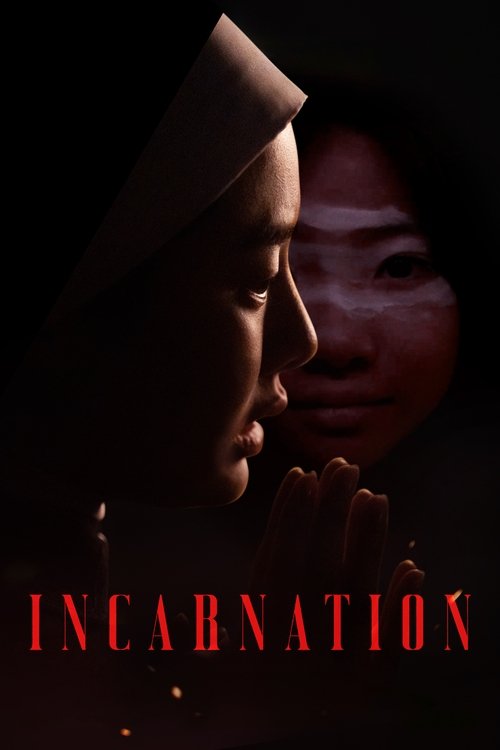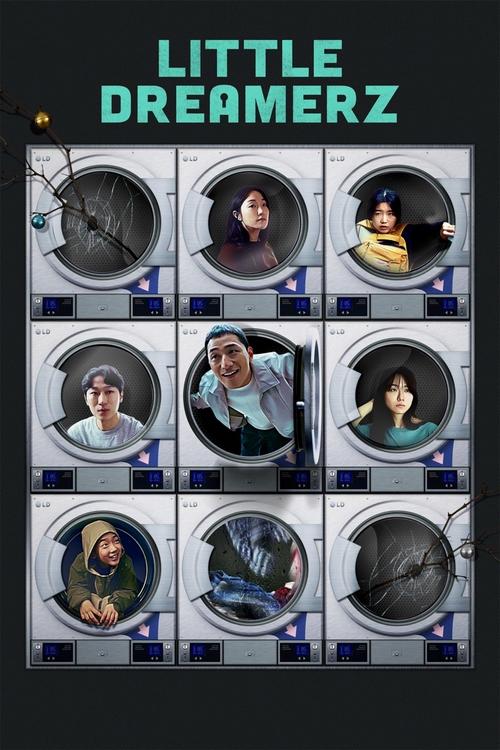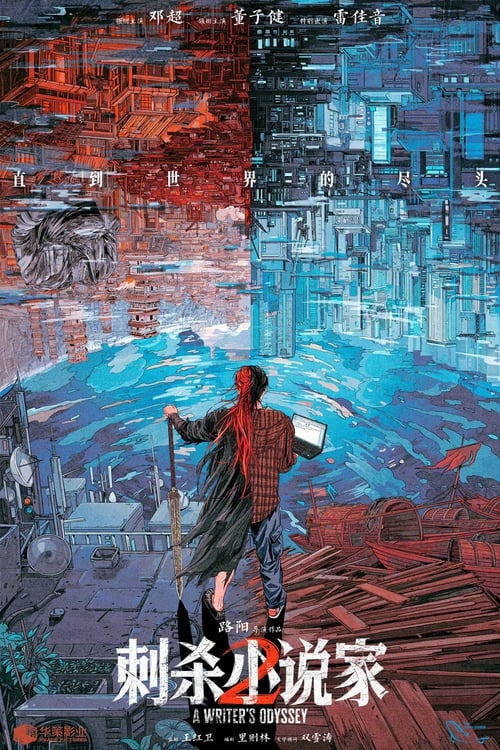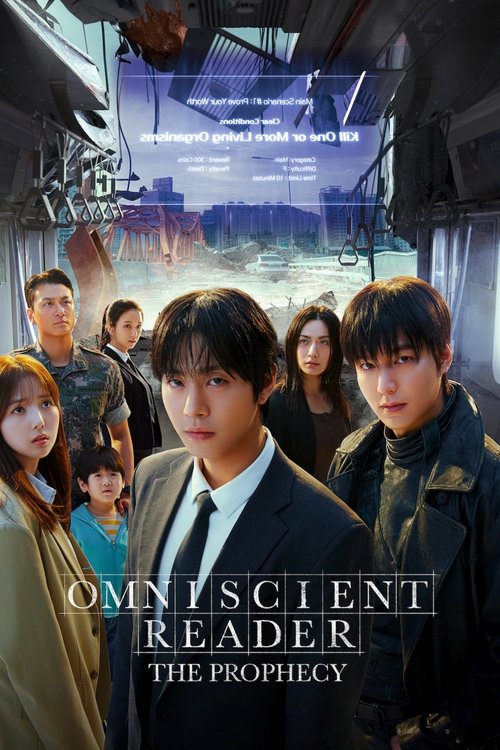
Ask Your Own Question
What is the plot?
Night falls over Seoul as a pattern of brutal, ritualized crimes begins to surface. Police officers discover a priest in a gutted chapel, his body arranged amid chalked sigils; paramedics arrive at an apartment where a young man seizes and speaks in a voice that is not his own; journalists broadcast footage of a statue of the Virgin smashed and its head left at an altar smeared with ash. The incidents mount over several days, and panic spreads through neighborhoods when witnesses report shadowy assemblies and torches burning beneath the elevated rails of the city. Regular law enforcement units respond to calls, cordon off crime scenes, and catalogue evidence, but their procedures and bullets do not halt the pattern. Phones ring at the Seoul Metropolitan Police Department with frantic callers claiming possession, and forensic teams return only symbols and scorch marks that defy rational explanation. The department elevates the matter to special investigators, who, after encountering ritual drawings and hushed references to a group called the Black Mass, make a tense, formal request: they need help the police cannot provide, and the city summons Holy Night.
Holy Night operates out of a modest compound on the edge of Seoul. The unit consists of three people who take their missions visibly and immediately. Ba Woo leads the team; he moves with a compact, forceful economy, and he answers confrontations with bare-handed violence when required. He is a man shaped by a past operation gone wrong: during an earlier intervention he witnessed failures that cost lives, and those memories flash through his skull whenever a ritual site brings him to his knees. Sharon functions as the group's spiritual counterweight. She holds ritual implements on a shelf, reads incantations from a dog-eared tome, and trusts patterns learned from long apprenticeship; she senses disturbances at the margins where other people feel only emptiness, and she prepares exorcisms in a mannerical, practiced way. Kim Gun supplies research and devices; he compiles dossiers, traces cult networks through social media fragments, and rigs equipment that disrupts occult protections. He has no gifts except a capacity to map connections and to make technology serve a purpose that is otherwise ceremonial. The three coordinate by habit, and when the Seoul police hand them a thin, stamped case file naming the Black Mass and a child victim, they divide tasks without question.
The case file belongs to a girl named Eun-seo, age nine, whose older sister, Jung-won, escorts her into Holy Night's workspace. Jung-won is a neuropsychiatrist with a clinical, evidence-oriented demeanor; she has treated patients for seizures and dissociation but she is not given to superstition. Jung-won speaks first to Kim Gun and then to Sharon and Ba Woo, detailing a deterioration that arrives as nightmares, sudden aversions to light, and sentences Eun-seo cannot recall speaking. Hospital staff have run scans and EEGs; neurology finds nothing that would account for the guttural voices that erupt in the child's throat. Jung-won insists on medical methods at first, and she presses doctors to pursue pharmacological interventions and cognitive therapy while she gathers data. Eun-seo's symptoms intensify overnight: she wakes with nails clenched into the mattress; she raises her head abruptly, eyes rolled back, and speaks in a voice with unnatural resonance. Jung-won calls the police when the girl attacks the home nurse, and the call sparks a chain that brings Holy Night into direct intervention.
Sharon meets Eun-seo in the hospital room. She removes a small rosary, whispers a preliminary rite, and notices immediately a sigil etched into the girl's shoulder in a pattern of cigarette burns. The sight prompts a sequence of actions: Sharon looks for residue, pours holy water onto the girl's blanket, and watches as the liquid beads and smokes along a channel on the fabric. Ba Woo inspects the marks and frowns; he slaps down the medical chart and declares that this is not a neurological problem but an applied ritual. Kim Gun begins to trace the marks digitally, photographs the room, and uploads the images to his database. Jung-won attacks the conclusion verbally; she cannot accept possession as an explanation. She insists that hallucination and dissociative episodes should be given priority, but when Sharon performs a short exorcism and Eun-seo's voice shifts and speaks directly to Sharon by name, Jung-won freezes, the neurological logic undone by the child's immediate response to Sharon's invocation.
Holy Night begins to investigate in earnest. Kim Gun's online searches and local scanners return a cluster of connections that lead to a fringe religious collective that the files call the Black Mass. Surveillance footage from a butchered cathedral shows robed figures with stenciled marks on their wrists; witnesses tell investigators they have seen candlelight processions that move underground through service tunnels and disused subway lines. The team visits churches that the cult has desecrated; they find pews overturned, altars slashed, and walls smeared with blackened sacrificial stains. At one location, Ba Woo spots a cleaned circle on the chapel floor and crouches to examine scratch marks in the stone. He finds a hairline fracture in the mortar and the residue of a powdered herb; he traces the route of the group's movements into the sewers beneath the city.
Confrontations follow the investigation in sequence. On the night the team follows a lead into an industrial corridor near the Han River, Ba Woo and Kim Gun witness a Black Mass recruitment ritual in process. Two robed acolytes bind a middle-aged woman to a steel pillar, and a third offers her a bowl of something thick and metallic. Ba Woo steps forward and forces the confrontation into immediate violence. He grabs a torch stand and swings it like a club; the first acolyte staggers, then collapses, its throat ruptured by the blow. Ba Woo charges into the group, punching and throwing attackers; he snaps one follower's jaw and throws another so hard against a concrete support that the man's vertebrae break audibly. Kim Gun deploys a small electromagnetic pulse device he built to short the cult's battering radios and their camera feed; the interruption throws the group into disarray and allows Sharon to move in. Sharon chants and sprinkles consecrated salt; a young recruit convulses beneath her words, and a dark fluid washes from the man's lips. Sharon reaches across and shoves a relic into his chest; the man screams and then goes limp, his breathing slowing until he stops. The team evacuates the survivor and the dead, and the scene yields information: a folded pamphlet in the dead man's pocket contains locations of a larger gathering scheduled at a cathedral outside the city center.
The investigation forces personal reckonings. Ba Woo begins to hallucinate in bright, disorienting flashes of his prior mission: he remembers a rescue that failed and a child he could not save, and those images return in the midst of raids. Sharon experiences a crisis of conviction when, during a minor exorcism at a housing complex, an elderly woman whispers doubt into Sharon's ear and the exorcist feels her prayers falter. Kim Gun pulls archival security footage from a precinct that reveals a man he recognizes: his estranged father gathered among the Black Mass in a small cell years earlier. The footage shows the father taking an altar candle and setting it upon a child's forehead. Kim Gun takes the clips home, rewinds them, and stares until his mouth dries; he writes a message he does not send and decides to keep the discovery a private grievance for the time being, fearing that confronting his father would distract the team.
The Black Mass accelerates its program. Notices arrive stitched into the hems of draperies: recruitment calls and fragmentary diagrams of a circle and a name -- Asmodeus -- that appears in charred letters across a posterboard behind a robed speaker. Kim Gun identifies Asmodeus as an ancient demon in compiled folklore, and the team translates the cult's intent: they intend to host a summoning in a dilapidated, underground cathedral beneath the city, and the child Eun-seo is marked as the vessel. The timeline is narrow; the cult has prepared a series of sacrifices and plans to use a unique confluence of liturgical alignments to anchor Asmodeus to the physical realm. The Holy Night plans an incursion: Ba Woo will breach the outer defenses and engage the cult's muscle, Sharon will confront the high priest and perform a counter-ritual, and Kim Gun will neutralize the warding sigils and cut power to the barriers holding the summoning in place. Jung-won insists on accompanying them; she cannot reconcile herself to leaving her sister in the hands of others, and she binds herself to the group as clinician and witness.
They find the cathedral by following a sewer line threaded into a forgotten network beneath a late Gothic church that faces a Seoul plaza. The facade above is boarded and roped with caution tape, but below, a flight of corroded iron stairs descends into must and candle wax. The team moves in at dusk. On the stair landing the air is thick with incense. The first frontal defense consists of a group of possessed guardians who rise from pews and hiss as Ba Woo pushes through. Ba Woo charges and engages them in hand-to-hand conflict. He throws one man across the aisle and snaps his neck with a heel strike. Another cultist swings a ceremonial knife and slices Ba Woo across the forearm; blood slicks the floor, and Ba Woo reacts with a flurried combination of elbows and knees that shatters the attacker's face and leaves the man faceless on the floor. Two more cultists surge forward; Ba Woo grabs a candle holder and impales the first through the chest, then uses the same metal rod to splinter the second man's leg and drive him into a carved lectern. The sound of bodies falling echoes as Ba Woo fights forward, his movements raw and powerful, leaving alive only those he intends to detain.
Sharon moves with a different speed. When she reaches the nave, the high priest is already present at the center of a concentric summoning circle; he stands on a dais and drapes his hands across an altar. He wears a mask and speaks in a tone that manipulates the room; his incantations reverberate and cause hair to rise on the back of Kim Gun's neck. Sharon steps into the circle and begins a counter-chant. She pulls from her satchel a small jar of consecrated oil and smears it across her own throat and forehead before flicking droplets outward. The high priest's voice rises and lashes like a whip; he throws shouts that are structured not as words but as patterns meant to sync with the sigils on the floor. Shadows peel from the walls and form into shapes that press against Sharon's face. She keeps rhythm with the chant, stamping her feet and matching the priest's cadences. As they exchange invocations, Sharon senses the priest manipulating not only words but a physical tether: he has threaded a portion of Asmodeus's presence into the circle. She widens her mouth and intones a line of archaic syllables that force the tether to pull taut.
Kim Gun kneels near the outer ring of the circle with his laptop and a customized generator. He watches digital readouts as sigils pulse in ultraviolet light and monitors the synchronization between candles. The generator emits a low frequency that, when amplified and targeted across the circle, is designed to break resonance and collapse the cult's shielding. He rigs a pair of electrodes to the iron grating of the nave and links them by cable to a ring that he drops into the chalk. He starts the generator and watches the readings climb. The protective patterns momentarily tremble, and a spasm of wind sweeps the room. A cultist at the threshold cries out, then lunges to cut the cable. Ba Woo intercepts the assailant with a blow that drives the man across an ambo; the attacker's skull cracks against stone and then stops moving. Ba Woo pulls the cables free and slams the man into a column, killing him by crushing the man's head between shoulder and masonry. The generator continues to whine as the build-up reaches a critical point.
Eun-seo hovers in the center of the circle. Her limbs are rigid and contorted; her hair lifts as if underwater. The high priest moves to a lowered position and lays his hands upon her throat. Her voice when it comes is not hers: it is deep and layered and rounds the syllables of a name with a gusto that displaces oxygen. Asmodeus speaks through Eun-seo in a voice that promises devastation. The room goes quiet as candles flare white and then blacken in a single heartbeat. The presence of the demon swells as the final pattern of the ritual presses against the world.
The battle fractures into three simultaneous confrontations. Ba Woo fights the guardians who defend the outer ring. He meets one who towers with an iron staff; Ba Woo crouches, loops his arm around the staff, dislocates the man's shoulder with a wrench, and then grabs the man's head and slams it repeatedly into the stone until the man's face is unrecognizable. Another guardian runs at Ba Woo and drives a dagger into his thigh; Ba Woo rips the blade free and counters by throwing the man into the balustrade, where the man's ribs break under the force and he dies with a crack of departure. Ba Woo racks and kills until he reaches the inner circle and collides with another group of cultists who have improvised spikes along the rim. He bites through flesh and tears clothing with bare hands as he kills on contact to clear a path.
Sharon's duel with the high priest intensifies. He hurls invocations at her that are pitched with malice, and she counters with phrases she learned in rites she refuses to name. At one point the priest slashes her palm with a ceremonial blade; blood wells, and the priest laughs as if the pain were fuel. Sharon uses her wound as part of the rite; she smears blood across the outer edge of the central sigil and then stamps her foot, reciting a passage that forces a visual response: the priest's mask cracks like porcelain and the seams of the robes loosen. The high priest reaches for a viler tool--a bell that feeds the demon with clanging--and Sharon grabs it mid-strike, snaps the handle with a practiced jerk, and swings the remaining metal into his jaw. He staggers backward, and for a moment the circle loses cohesion. Sharon senses the presence of Asmodeus strain against the weakened pattern and pushes her voice forward, flooding the high priest's ears with a counter-chant that forces him into contraction. The counter-chant has a physical effect: the priest's skin boils and smokes and then erupts in open sores. He collapses to his knees, his mask hanging by a thread. In his attempt to retaliate he lunges at Sharon with a concealed blade; Sharon sidesteps, grabs his arm, jerks, and the man impales himself on the broken bell piece with an animal scream. Blood pours and the man slumps, convulsing as Sharon maintains the invocation until the man goes still. The high priest dies in the center of his own circle, his body burned and ruptured by the opposition of the two rituals.
Kim Gun's device reaches a critical threshold. He pulls a switch that sends a concentrated surge into the sigils; the chalk-line flames spike and then implode. The collapse of the wards breaks the circle's anchoring. The energy that had been building transfers not to the physical realm but back through the sigils as backlash. The force slams into the fabric of the cathedral and into the people inside it. Several robed cultists catch the reflex of the recoil and are thrown back; two of them strike a column and their skulls fracture on the carved capital. A third cultist, who had been kneeling and clutching an ornate knife, falls forward as the blade slices his own throat from reflex and then bleeds out across the altar. Other followers sit up with their faces melted into a hard grin and then smoke where they stand; the energy scorches exposed skin and they collapse into ash. Kim Gun watches the readouts and vomits; the generator lasts through the spike and then goes silent as the batteries drain to zero.
Eun-seo convulses as Asmodeus attempts to be fully drawn into flesh. Ba Woo slams through the last of the defenders and reaches her, grabbing the girl and trying to drag her out of the circle. Asmodeus resists. The demon thrusts its will outward like a blade; Ba Woo feels something rip across his chest and hears an otherworldly laugh inside his skull. He lurches, then makes a calculated decision. He exposes himself--he pushes Eun-seo closer to his own body and allows a fragment of the demon's anchoring to thread into him, to cling to a vessel he chooses. He takes the possession on purpose. The sensation is immediate and violent: a cold wind pours through him, his limbs fill with light and then throb with static, and his voice multiplies into a chorus of other men's voices. Sharon grips his arm and commands him in a tone that is almost not a voice but a structure, and she begins a directed exorcism aimed not only at the girl but at the portion of the demon that has ridden into Ba Woo. This ritual--Sharon's fastest and most dangerous application--redirects the demon's hunger into a controlled pathway.
Sharon chants with her whole body as Kim Gun amplifies the counter-frequency and feeds the Cathedral's ironwork with a current intended to siphon away the demon's anchorage. The demon, now split between Eun-seo and Ba Woo, lashes out in protest: candleflames burst into tongues of blue, and stone dust rains from the rafters. The anchoring circle thrums and then detonates; its explosion is not merely physical but metaphysical: the sigils burn upward in light and the figure of Asmodeus remains visible for a moment as a contorted, layered shadow. Ba Woo, possessing a portion of the demon's force, channels that force against the circle. He thrusts the power inward as though squeezing a living thing, and the circle fractures from within. The ritual architecture that sought to hold Asmodeus collapses with a sound like a thousand doors closing. The demon's projection wrenches, screams, then combusts inward, and a wave of force throws all occupants to the ground.
Bodies strewn across the nave react differently. Several cultists die instantly in the backwash: one follower's chest explodes as if turned into a furnace, and the man goes limp, his skin blistered and blackened. Another cultist, trying to flee through a side corridor, trips and tumbles down a flight of stairs, cracking his skull on the landing; he dies on impact. The high priest's body has already been consumed by the counter-ritual and lies collapsed near the altar, charred and unrecognizable. Ba Woo collapses atop Eun-seo as energy dissipates; he is breathing but he is close to death. Sharon continues to mutter finishing lines of the rite over the girl's form, and the last ligature snaps: a thread that entered Eun-seo's throat recoils and curls into ash.
Medical teams and police arrive within minutes, finding the cathedral wrecked with pews smashed, candles reduced to stubs, and the floor plastered with powdered sigil remnants. Officers haul away bodies that remain intact and bag them for evidence. Holy Night coordinates with authorities to identify and secure survivors. Kim Gun stands trembling, clutching his laptop; he watches Eun-seo's chest rise and fall and then closes his eyes. Jung-won kneels by her sister's side and clasps a hand that is warm and finally wholly Eun-seo's again. Ba Woo lies on the floor beside them; his breathing is ragged and stained with the smell of sulfur and iron. Sharon rises and shakes a final line of ash from her hands. No one in the cathedral dies after the ritual's conclusion among the principal trio: Ba Woo survives but is gravely injured, Sharon is burnt and cut but breathing, Kim Gun suffers a deep shock but is physically intact. Several of the cult leadership are dead: the high priest dies by his own failed ritual and Sharon's counter-chant that forces his body into rupture and combustion; numerous acolytes and guardians die by blunt force or by the explosion of ritual backlash--the precise causes are recorded by investigators who catalogue burned corpses, skull fractures, and multiple puncture wounds inflicted during close-quarters fighting. Police secure the scene and identify the dead as members of the Black Mass; they haul the bodies into black bags and place them in refrigerated vans. The city prints the names of several prominent cultists later that week, listing their causes of death as trauma and immolation stemming from a failed summoning.
In the aftermath, Eun-seo is admitted to a clinical ward reserved for debriefing and observation. Doctors run tests and find no longer any trace of possession. She sleeps and wakes with memories that arrive like shards: she remembers bright candles, the smell of incense, the touch of the high priest's hand, but many hours remain hazy. Jung-won stays beside her, and in the quiet hours watches over the child as she recovers. Jung-won's skepticism has shifted; she accepts that what she saw cannot be explained by neurology alone and enrolls herself informally with Holy Night to apply her medical expertise to future cases. She speaks with Kim Gun about neurophysiology and ritual-induced trauma; Kim Gun talks about sigils and frequency; together they begin to build a protocol that merges clinical practice with the occult countermeasures Holy Night has used in the field.
Ba Woo recovers in a hospital bed from his wounds. He receives stitches where the high priest's knife cut his arm and treatment for second-degree burns from the exposure to the demon's force. He suffers nightmares in which the demon speaks through him, and he wakes sweating. He refuses to return to the clinic's regular staff, instead back in his room on crutches and with bandages, sorting through equipment and cleaning a battered rosary. Sharon visits him, brings flowers that she leaves on the bedside stand, and they exchange few words. In private, Sharon reviews recordings of the final ritual, annotates weak points of their countermeasure, and writes down the incantations that succeeded and those that almost failed. Kim Gun goes through seized devices and catalogs their technology, processing images for future reference. He returns, at one point, to the archival footage of his father and, without announcing it, puts a copy of the file in a sealed envelope at the team's base. He does not say whether he will confront the man in the footage.
Authorities dismantle the surviving cells of the Black Mass over subsequent weeks. Arrests occur as investigators trace money flows and networks identified by Kim Gun. Some mid-level members are apprehended alive and taken into interrogation. A number of those detainees plead guilty or provide evidence on others; prosecutors build a case based on the evidence of ritual paraphernalia, video footage, and the remains of the failed summoning. The high-profile trial that follows names a handful of defendants; the court details the deaths that occurred in the cathedral and references expert testimony about the injuries. The public, alarmed by the spectacle, demands stronger oversight of fringe groups.
Eun-seo begins a slow recovery. She attends therapy sessions with Jung-won and a therapist recommended by Holy Night. Her memories return in fragments; she sketches a robed figure and a circle, but she cannot recall the full span of the demon's voice. Occasionally she wakes screaming, and the family patience and presence stabilizes her. Jung-won, now more receptive to nontraditional explanations, trains under Sharon in basic protective rites and in how to support victims of ritual trauma. She continues to practice medicine during the day and to consult with Holy Night at night, forming a new professional tie that will, in time, solidify into membership.
Holy Night repairs and refurbishes its equipment. Ba Woo relearns restraint and fights in the compound's training room, moving with a steadier hand and bracing for the next time a ritual requires a personal sacrifice. Sharon restocks her satchel of oils and ashes, writes new words in the back of her ritual book, and renews vows to continue the work. Kim Gun inventories the cultural and digital traces of Asmodeus and stores them on encrypted drives. They set protocols and refine tactics based on the failure and the near-loss of the team in the cathedral. At a formal meeting with Seoul police leadership, the Holy Night team agrees to cooperate in future incidents as a special response unit.
The film closes with the team's compound quiet at night. Sharon arranges candles on an altar and checks off items on a list. Ba Woo sits across the room rubbing his hands, and Kim Gun scrolls through a message board on a laptop. The phone rings; Kim Gun answers. He receives a new, anonymous dossier delivered via a secure channel: a thin file with an emblem not unlike the sigil used by the Black Mass, with unredacted footage of a different group performing a ritual in a distant provincial town. Kim Gun's face tightens as he scrolls. He looks up at the others and closes the laptop. The camera holds on the file's header page, where a single line of text names a place and date for an upcoming convergence. Holy Night stands together, prepared to move once more into the breach. The final frame freezes on their faces--worn, determined, and aware that the work continues--and then the screen cuts to black.
What is the ending?
The movie "Holy Night: Demon Hunters" (2025) ends with the demon hunters successfully defeating a powerful demon summoned by Archbishop Lucifer's group. Ba Woo cleverly absorbs and redirects the demon's power to defeat it, while Sharon completes the exorcism, banishing the demon Malik to hell. Yansio, a character who was possessed or manipulated, is restored. The film concludes with the demon hunters opening an orphanage run by Madame Angela, preparing to dismantle Archbishop Lucifer's group for good. A post-credits scene teases a future showdown with Lucifer or a possessed Joff.
Expanding on the ending scene by scene:
The climax unfolds as Archbishop Lucifer's cult uses Yansio as a vessel to summon the devil, unleashing a brutal and intense battle. Ba Woo, the physically powerful leader of the demon hunters, confronts a formidable demon. During the fight, Ba Woo demonstrates strategic combat skills by absorbing the demon's energy and redirecting it back, ultimately overpowering the creature. This moment highlights Ba Woo's strength and resourcefulness.
Meanwhile, Sharon, the skilled exorcist of the team, performs the critical ritual to complete the exorcism. Her actions banish Malik, the demon possessing Yansio, sending him back to hell. This act restores Yansio to his original self, freeing him from demonic control.
Following the victory, the demon hunters regroup and establish an orphanage managed by Madame Angela. This new sanctuary symbolizes their commitment to protecting the innocent and rebuilding after the chaos. Their powers are stronger than before, and they prepare to take on Archbishop Lucifer's group decisively.
The film closes with a post-credits scene that hints at future conflict, suggesting a potential confrontation with Lucifer himself or a character named Joff who may become possessed. This sets up the possibility of a sequel and further adventures for the demon hunters.
Regarding the fate of the main characters at the end:
-
Ba Woo survives the final battle, having used his strength and cunning to defeat the demon.
-
Sharon successfully completes the exorcism, maintaining her role as the spiritual anchor of the team.
-
Yansio is restored to normal, freed from demonic possession.
-
Madame Angela is introduced as the caretaker of the orphanage, supporting the demon hunters' mission.
The ending leaves the core team intact and empowered, ready to continue their fight against evil forces.
Is there a post-credit scene?
Yes, Holy Night: Demon Hunters (2025) features a post-credit scene. In this scene, after the main battle where the demon Asmodeus is banished and the cult is broken, the Holy Night trio receives a mysterious new file indicating that a new darkness is already emerging elsewhere. This sets up the possibility of future missions and continuing threats beyond the current story, emphasizing that evil never fully dies and hinting at further adventures for the demon hunters.
What role does Seo-hyun's character, Sharon, play in the Holy Night team?
Seo-hyun portrays Sharon, who possesses an extraordinary ability to sense the presence of demons. Armed with ancient exorcism spells, Sharon brings a distinctive element to the team, enhancing the film's eerie atmosphere and deepening the supernatural thriller experience.
How does Kim-gun contribute to the Holy Night team's missions?
Kim-gun, played by Lee Da-wit, serves as the team's strategic mind. He gathers crucial information about the cultists, ensuring the Holy Night team operates seamlessly during their missions. His role is vital for their success against evil.
What motivates Jung-won in the story?
Jung-won is motivated by her desperate desire to rescue her sibling, Eun-seo, who has fallen victim to demonic possession. This emotional journey adds depth to the narrative as Jung-won grapples with helplessness and despair while fighting against the malevolent forces threatening her family.
How does Ba Woo's character impact the story?
Ba Woo, played by Ma Dong-seok, is a powerhouse fighter whose unmatched strength embodies the spirit of a true warrior against darkness. He provides the power to keep the enemies at bay, literally punching the evil out of people, which is a pivotal aspect of the team's battles against demons.
What is the nature of the cultists in the story?
The cultists in Holy Night: Demon Hunters are part of a devil-worshipping crime syndicate that has taken over Seoul. They are superpowered by satanic forces, making them formidable opponents for the Holy Night team. The cultists' activities overwhelm the police, necessitating the intervention of the demon hunters.
Is this family friendly?
Holy Night: Demon Hunters (2025) is a Korean action-horror film that blends exorcism tropes with supernatural combat, starring Ma Dong-seok (Don Lee) as a demon hunter with a tragic past. While the film is energetic and at times comedic, it is not considered family friendly, especially for younger children or sensitive viewers. Below is a detailed, spoiler-free breakdown of potentially objectionable or upsetting content, organized by narrative sequence and emotional impact.
Opening and Early Scenes
The film opens with a sense of foreboding, establishing a world where malevolent supernatural forces are real and dangerous. Early scenes include eerie, dimly lit environments, sudden paranormal occurrences, and characters reacting with palpable fear. The atmosphere is tense, with unsettling sound design and visuals that evoke classic horror films. Sensitive viewers may find the jump scares and the pervasive sense of dread distressing.
Supernatural Violence and Possession
As the story progresses, there are explicit depictions of demonic possession. Characters exhibit disturbing physical transformations--contorted limbs, unnatural movements, and grotesque facial expressions. The possession sequences are intense, with victims screaming in pain and terror, their bodies convulsing against their will. These scenes are designed to unsettle and may be particularly frightening for children or those sensitive to body horror.
Action and Physical Combat
Ma Dong-seok's character, Ba Woo, is a physically imposing exorcist who literally punches demons out of possessed individuals. The action is stylized but visceral, with loud impacts, bone-crunching sound effects, and occasional blood splatter. While the violence is supernatural in nature, the physicality and aggression could be upsetting for younger audiences. The film does not shy away from showing the physical toll on both the possessed and the hunters, including bruises, exhaustion, and emotional trauma.
Flashbacks and Emotional Trauma
Interspersed throughout are flashbacks to Ba Woo's childhood, revealing a tragic event involving his brother. These scenes are emotionally heavy, depicting loss, guilt, and unresolved grief. The tone is somber, and the visual style shifts to a more muted palette, emphasizing the character's internal pain. Sensitive viewers may find these moments emotionally taxing, especially as they recur and deepen the protagonist's motivations.
Climactic Confrontation
The finale escalates the supernatural stakes, with a climactic battle against a powerful demonic entity. The special effects include CGI creatures with exaggerated, monstrous features, and the confrontation is loud, chaotic, and visually intense. The resolution involves a mix of physical combat and ritualistic exorcism, with heightened stakes and a sense of desperation among the characters.
Overall Tone and Content
While the film has moments of humor and camaraderie among the demon-hunting team, the overall tone leans toward the dark and suspenseful. The horror elements are central, and the action, while entertaining for some, is frequent and forceful. The emotional arcs, especially those dealing with past trauma and loss, add a layer of seriousness that may not be suitable for all ages.
Summary of Potentially Objectionable Content
- Supernatural horror: Frequent jump scares, eerie atmospheres, and disturbing possession sequences.
- Body horror: Visible physical transformations, convulsions, and grotesque facial expressions during possession.
- Violence: Stylized but intense physical combat, punching, and occasional blood.
- Emotional trauma: Flashbacks to childhood tragedy, themes of loss, guilt, and grief.
- Loud, chaotic climax: Special effects-heavy battle with monstrous CGI creatures and heightened tension.
Holy Night: Demon Hunters is best suited for mature audiences comfortable with horror and action. Parents and sensitive viewers should be aware of the film's intense supernatural violence, emotional weight, and frightening imagery.

